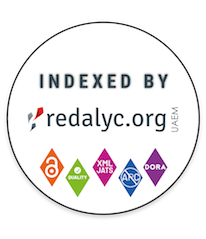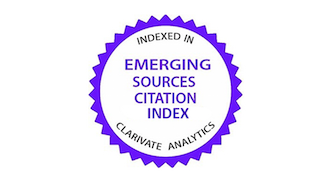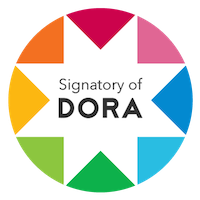Perception and Management of Mango (Mangifera indica L.) Dieback Disease in Actopan, Veracruz, Mexico
DOI:
https://doi.org/10.15517/am.2025.61756Keywords:
plant diseases, pathogenic fungi, rot, gummosisAbstract
Introduction. Dieback is a serious disease reported in mango-producing regions of Mexico; however, there is no information on the perception and management of this disease by mango producers. Objective. To assess the perception of mango producers in the municipality of Actopan, Veracruz, Mexico regarding dieback disease, to evaluate the management practices they implement, and to describe their socioeconomic and production characteristics. Materials and methods. The research was conducted in the municipality of Actopan, Veracruz, Mexico in the years 2021–2022. Semi-structured interviews with 45 questions were applied to mango producers. The socioeconomic characterization of the producers, plot management, recurrent diseases, and the perception and management of mango dieack were addressed. The data obtained from the surveys were analyzed using various multivariate and descriptive statistical tools. Results. The majority of the producers were men (94 %) with a wide age range, predominantly older adults and young adults. A cluster analysis identified three distinct groups of producers: small (SPM,56 %), medium (MPM,16 %), and large (LPM,28 %) mango producers, each with specific characteristics regarding cultivated area, agronomic management, and yield (M = 8,54 ± 3,75 t/ha). The mango dieback was widely recognized by all surveyed producers; the main symptoms associated with the disease: gummosis, branch rot, and trunk rot. Only 18.75 % of the producers implement some type of specific management or control of mango dieback, mainly through chemical and mineral fungicides. Conclusions. For mango producers in Actopan, Veracruz, dieback is a highly important disease in their cultivation. They carry out some basic management strategies; however, these have not been efficient, which has led to an interest in the development of new and better control tools.
Downloads
References
Astudillo-Miller, M. X., Maldonado-Astudillo, R. I., Segura-Pacheco, H. R., & Pallac Maldonado, Y. M. (2020). Cadenas de comercialización de mango y potencial exportador en la Costa Grande, Guerrero. Revista Mexicana de Ciencias Agrícolas, 11(1), 111–124. https://doi.org/10.29312/remexca.v11i1.1769
Clonan, M., McConchie, C., Hall, M., Hearnden, M., Olesen, T., & Sarkhosh, A. (2021). Effects of ambient temperatures on floral initiation in Australian mango (Mangifera indica L.) selections. Scientia Horticulturae, 276, Article 109767. https://doi.org/10.1016/j.scienta.2020.109767
Coelho, W. C. P., Santos, C. A. F., & Batista, D. da C. (2020). Variability of mango accessions resistance to dieback disease caused by Lasiodiplodia theobromae and Neofusicoccum parvum. Amazonian Journal of Plant Research, 4(1), 462–468. https://ainfo.cnptia.embrapa.br/digital/bitstream/item/217769/1/Variability-of-mango-accessions-2020.pdf
Comité Nacional Sistema Producto Mango. (2012). Plan rector nacional de sistema producto mango. https://sursureste.org.mx/wp-content/uploads/2022/08/Plan-Rector-del-Sistema-Producto-Mango-2012.pdf
De Janvry, A., & Sadoulet, E. (2022). Agriculture for Development: Analytics and Action. Annual Review of Resource Economics, 14, 1–16. https://doi.org/10.1146/annurev-resource-090921-045011
Dofuor, A. K., Quartey, N. K.-A., Osabutey, A. F., Antwi-Agyakwa, A. K., Asante, K., Boateng, B. O., Ablormeti, F. K., Lutuf, H., Osei-Owusu, J., Osei, J. H. N., Ekloh, W., Loh, S. K., Honger, J. O., Aidoo, O. F., & Ninsin, K. D. (2023). Mango anthracnose disease: The current situation and direction for future research. Frontiers in Microbiology, 14, Article 1168203. https://doi.org/10.3389/fmicb.2023.1168203
Doss, C. (2013). Intrahousehold bargaining and resource allocation in developing countries. The World Bank Research Observer, 28(1), 52–78. https://doi.org/10.1093/wbro/lkt001
Elena, G., & Luque, J. (2016). Pruning debris of grapevine as a potential inoculum source of Diplodia seriata, causal agent of Botryosphaeria dieback. European Journal of Plant Pathology, 144(4), 803–810. https://doi.org/10.1007/s10658-015-0782-9
Hernández-Nolasco, L. (2023). La cadena productiva del mango. Factor clave para el desarrollo local en la zona oriente del Istmo de Tehuantepec, Oaxaca. Estudios Sociales. Revista de Alimentación Contemporánea y Desarrollo Regional, 33(61), Artículo e231288. https://doi.org/10.24836/es.v33i61.1288
Kwon, J.-H., Choi, O., Kang, B., Lee, Y., Park, J., Kang, D.-W., Han, I., & Kim, J. (2017). Identification of Lasiodiplodia pseudotheobromae causing mango dieback in Korea. Canadian Journal of Plant Pathology, 39(2), 241–245. https://doi.org/10.1080/07060661.2017.1329231
Li, L., Mohd, M. H., Mohamed Nor, N. M. I., Subramaniam, S., & Latiffah, Z. (2021). Identification of Botryosphaeriaceae associated with stem-end rot of mango (Mangifera indica L.) in Malaysia. Journal of Applied Microbiology, 130(4), 1273–1284. https://doi.org/10.1111/jam.14828
Makhmale, S., Bhutada, P., Yadav, L., & Yadav, B. (2016). Impact of climate change on phenology of mango-the case study. Ecology, Environment and Conservation, 22(Suppl.), 119–124. https://www.envirobiotechjournals.com/issues/article_abstract.php?aid=7224&iid=217&jid=3
Marques, M. W., Lima, N. B., de Morais, M. A., Barbosa, M. A. G., Souza, B. O., Michereff, S. J., Phillips, A. J. L., & Câmara, M. P. S. (2013). Species of Lasiodiplodia associated with mango in Brazil. Fungal Diversity, 61, 181–193. https://doi.org/10.1007/s13225-013-0231-z
Martínez Flores, A. M., Rodríguez, W. D., Hernández Salcido, P. G., Guapo Mora, L. A., Valderrama Herrera, M., & Navarrete Maya, R. (2023). The influence of temperature and precipitation on the abundance of Anastrepha ludens and A. obliqua (Diptera: Tephritidae), in “Barranqueño” mango (Mangifera indica) in Jalisco, Mexico. Phytoparasitica, 51(1), 29–40. https://doi.org/10.15446/acag.v68n1.66263
Moret, F., Jacquens, L., Larignon, P., Clément, G., Coppin, C., Noirot, E., Courty P.-E., Fontaine, F., Adrian, M., & Trouvelot, S. (2024). Physiological and developmental disturbances caused by Botryosphaeria dieback in the annual stems of grapevine. Frontiers in Plant Science, 15, Article 1394821. https://doi.org/10.3389/fpls.2024.1394821
Organización de las Naciones Unidas para la Alimentación y la Agricultura. (2022). Principales frutas tropicales. Análisis de mercado 2021. https://openknowledge.fao.org/server/api/core/bitstreams/6af491ae-cf66-460a-8c18-3fce1f004a55/content
Pérez Barraza, M. H., Urías López, M. A., Osuna García, J. A., Pérez Luna, A. I., Nolasco González, Y., & García Álvarez, N. C. (2016). Efecto de poda en escama blanca y producción de mango ‘Ataulfo’. Revista Mexicana de Ciencias Agrícolas, 7(8), 1841–1853.
Rodríguez-Gálvez, E., Guerrero, P., Barradas, C., Crous, P. W., & Alves, A. (2017). Phylogeny and pathogenicity of Lasiodiplodia species associated with dieback of mango in Peru. Fungal Biology, 121(4), 452–465. https://doi.org/10.1016/j.funbio.2016.06.004
Saeed, E. E., Sham, A., AbuZarqa, A., Al Shurafa, K. A., Al Naqbi, T. S., Iratni, R., El-Tarabily, K., & AbuQamar, S. F. (2017). Detection and Management of Mango Dieback Disease in the United Arab Emirates. International Journal of Molecular Sciences, 18(10), Article 2086. https://doi.org/10.3390/ijms18102086
Sandoval-Sánchez, M., Nieto-Ángel, D., Sandoval-Islas, J. S., Téliz-Ortiz, D., Orozco-Santos, M., & Silva-Rojas, H. V. (2013). Hongos asociados a pudrición del pedúnculo y muerte descendente del mango (Mangifera indica L.). Agrociencia, 47(1), 61–73. https://www.agrociencia-colpos.org/index.php/agrociencia/article/view/1002
Saucedo-Picazo, L. E., Hernández-Montiel, L. G., Flores-Estévez, N., Gerez-Fernández, P., Argüello-Ortiz, A. F., & Noa-Carrazana, J. C. (2022). Coinfection and in vitro interaction of Lasiodiplodia pseudotheobromae and Pestalotiopsis mangiferae associated with dieback in branches of mango (Mangifera indica) Manila variety, in Veracruz, Mexico. Revista Mexicana de Fitopatología, 40(3), 308–329. https://doi.org/10.18781/r.mex.fit.2203-4
Servicio de Información Agroalimentaria y Pesquera. (2023). Cierre de la producción agrícola. Anuario estadístico de la producción agrícola. Servicio de Información Agroalimentaria y Pesquera.
Sharma, G., Elazar, M., Maymon, M., Meshram, V., & Freeman, S. (2024). Identification and pathogenicity of Lasiodiplodia and Neoscytalidium species associated with mango (Mangifera indica) dieback disease in Israel. Phytoparasitica, 52(8), Article 2401123. https://doi.org/10.1007/s12600-024-01123-z
Shu, J., Yu, Z., Sun, W., Zhao, J., Li, Q., Tang, L., Guo, T., Huang, S., Mo, J., Hsiang, T., & Luo, S. (2020). Identification and characterization of pestalotioid fungi causing leaf spots on mango in southern China. Plant disease, 104(4), 1207–1213. https://doi.org/10.1094/PDIS-03-19-0438-RE
Sierra Bravo, R. (2001). Técnicas de investigación Social: Teoría y ejercicios (1ª ed.). Editorial Paraninfo.
Sosa, M. C., Lutz, M. C., Lódolo, X., & Basso, C. N. (2022). In vitro and in vivo activity of chemical fungicides and a biofungicide for the control of wood diseases caused by botryosphaeriales fungi in apple and pear. International Journal of Pest Management, 68(4), 328–338. https://doi.org/10.1080/09670874.2022.2116660
Sosnowski, M. R., Ayres, M. R., Billones-Baaijens, R., Savocchia, S., & Scott, E. S. (2023). Susceptibility of pruning wounds to grapevine trunk disease pathogens Eutypa lata and Diplodia seriata in three climatic conditions in Australia. Fungal Ecology, 64, Article 101260. https://doi.org/10.1016/j.funeco.2023.101260
Tennakoon, D. S., Phillips, A. J. L., Phookamsak, R., Ariyawansa, H. A., Bahkali, A. H., & Hyde, K. D. (2016). Sexual morph of Lasiodiplodia pseudotheobromae (Botryosphaeriaceae, Botryosphaeriales, Dothideomycetes) from China. Mycosphere, 7(7), 990–1000. https://doi.org/10.5943/mycosphere/si/1b/11
Tovar-Pedraza, J. M., Mora-Aguilera, J. A., Nava-Diaz, C., Lima, N. B., Michereff, S. J., Sandoval-Islas, J. S., Câmara, M. P. S., Téliz-Ortiz D., & Leyva-Mir, S. G. (2020). Distribution and pathogenicity of Colletotrichum species associated with mango anthracnose in Mexico. Plant disease, 104(1), 137–146. https://doi.org/10.1094/PDIS-01-19-0178-RE
Úrbez-Torres, J. R., Battany, M., Bettiga, L. J., Gispert, C., McGourty, G., Roncoroni, J., Smith, R. J., Verdegaal, P., & Gubler, W. D. (2010). Botryosphaeriaceae species spore-trapping studies in California vineyards. Plant Disease, 94(6), 717–724. https://doi.org/10.1094/PDIS-94-6-0717

Downloads
Additional Files
Published
How to Cite
Issue
Section
License
Copyright (c) 2025 Juan Carlos Noa-Carrazana, Norma Flores-Estévez, Felipe Roberto Flores-de la Rosa, Luis Guillermo Hernández-Montiel, Liliana Eunice Saucedo-Picazo

This work is licensed under a Creative Commons Attribution-NonCommercial-NoDerivatives 4.0 International License.
1. Proposed policy for open access journals
Authors who publish in this journal accept the following conditions:
a. Authors retain the copyright and assign to the journal the right to the first publication, with the work registered under the attribution, non-commercial and no-derivative license from Creative Commons, which allows third parties to use what has been published as long as they mention the authorship of the work and upon first publication in this journal, the work may not be used for commercial purposes and the publications may not be used to remix, transform or create another work.
b. Authors may enter into additional independent contractual arrangements for the non-exclusive distribution of the version of the article published in this journal (e.g., including it in an institutional repository or publishing it in a book) provided that they clearly indicate that the work was first published in this journal.
c. Authors are permitted and encouraged to publish their work on the Internet (e.g. on institutional or personal pages) before and during the review and publication process, as it may lead to productive exchanges and faster and wider dissemination of published work (see The Effect of Open Access).























